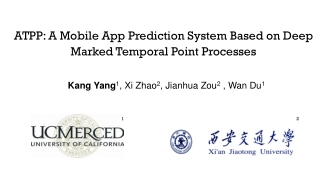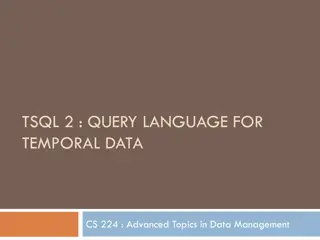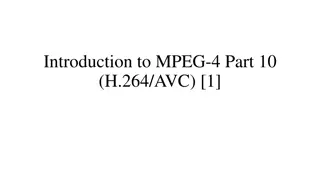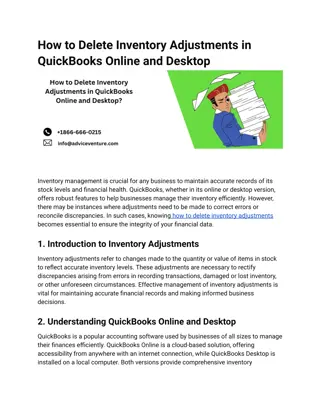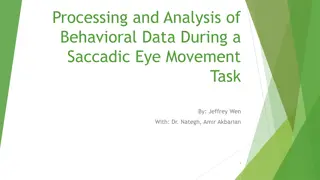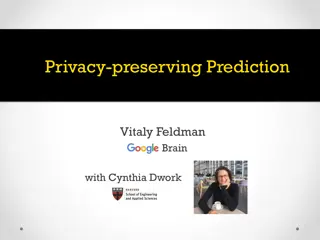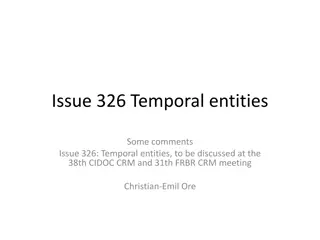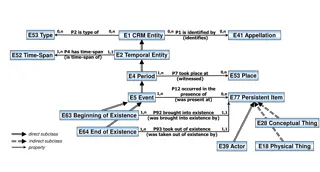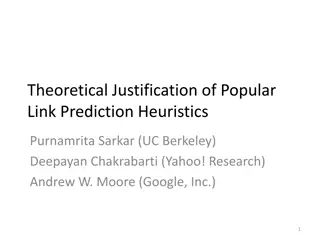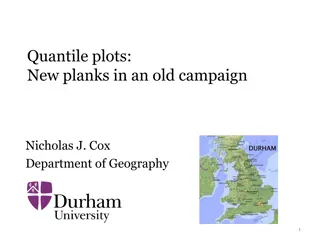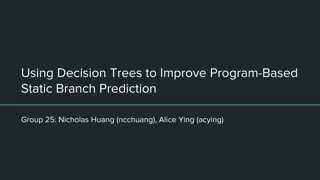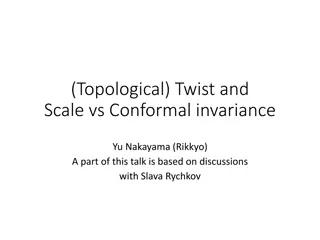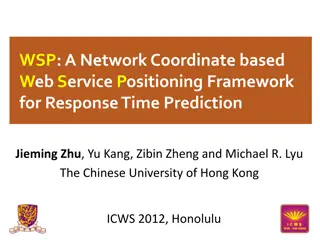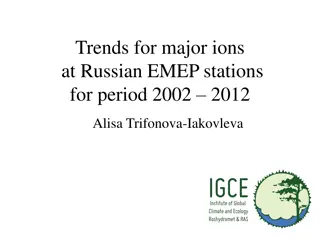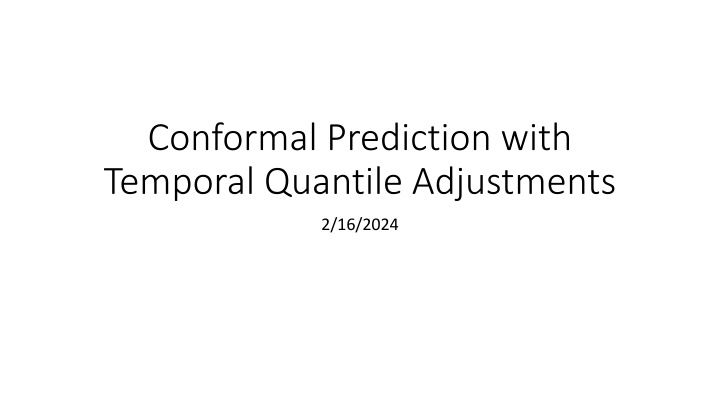
Temporal Quantile Adjustment for Conformal Prediction in Healthcare
Explore the application of temporal quantile adjustments in conformal prediction for estimating patient outcomes using physiological time-series data. Learn how to improve longitudinal coverage in predictive modeling across a population of patients by adapting to temporal dependencies.
Uploaded on | 1 Views
Download Presentation

Please find below an Image/Link to download the presentation.
The content on the website is provided AS IS for your information and personal use only. It may not be sold, licensed, or shared on other websites without obtaining consent from the author. If you encounter any issues during the download, it is possible that the publisher has removed the file from their server.
You are allowed to download the files provided on this website for personal or commercial use, subject to the condition that they are used lawfully. All files are the property of their respective owners.
The content on the website is provided AS IS for your information and personal use only. It may not be sold, licensed, or shared on other websites without obtaining consent from the author.
E N D
Presentation Transcript
Conformal Prediction with Temporal Quantile Adjustments 2/16/2024
Background Predicting patient outcomes using physiological time-series data A population of patients composes a cross-section Want to estimate coverage across 2 settings: Cross-sectional coverage (across a cohort of patients) (will not hold for an interaction graph) Longitudinal coverage (across the temporal dimension) for each time series
Setting ?with each ?? Assume that data is comprised of N TS with ?? ?=1 sampled from distribution ??. Each ??consists of [??,1, ,??,?, ,??,?] where ??,?= (??,?,??,?) Task: Given data ??+1,??=1 until time t for a new and ??+1,?+1for TS ??+1,predict ??+1,?+1at unknown time t+1 Further: Quantify uncertainty of each prediction by constructing valid prediction intervals. Given a confidence level 1-?, construct a prediction interval ??,?+1,?+1that will cover ??+1,?+1with probability 1 ?. ?
Validity Longitudinal validity: Validity along the temporal axis for each time series Cross-sectional validity: validity across the populational cross-section of the time series data
Constructing Cross-sectionally valid PIs ? Split training data ?? ?=1 Training set will train models for the NC score function Calibration set will be used to collect such NC scores (denoted by V(.)) Example: train RNN and the absolute residual ??,?= ??,? ??,? is the NC score. Here ??,?= ???(??,?;??,:? 1) Given NC score V(.) and a set of exchangeable time series ?? ?=1 split conformal method generates 1 ? cross-sectionally valid PI: into proper training set and calibration set ?+1, the
Temporal Quantile Adjustment Because a dynamic representation is dependent on embeddings from previous times, exchangeability will not hold Longitudinal coverage may be empirically improved if we adapt to the temporal dependence. Suppose the RNN has been giving high error predictions for a patient for 8 out of the past 10 days, we may suspect high error going forward for this patient as well. If that is the case, naively applying ??????can only attain low coverage for this patient no matter how long we observe To address this, the authors propose to query different quantiles based on the partially observed time series
???,?,?,?= PI for ??,?with pre-specified target coverage of 1 ??,? Let ??,?= ? ??,?where ??,?is quantile adjustment ?+1: Denote RV ??,?as rank/quantile of ??,?among ??,??=1 ??,?= ? 1??,?; ??,??=1 Intuitively, we want smaller ??+1,?when we believe ??+1as a whole is less conformal and ??+1,?is likely high If there is no actual temporal dependence between the NC scores, there is no loss is coverage as long as the expected adjustment is zero |{?:??,?< ??,?}| N + 1 ?+1 =
Quantile Budgeting (TQA-B) We want to keep same coverage when we can t predict the quantiles but improving coverage when we can. This suggests design of a ? with a type of budgeting . They do it by a 2 step approach: Predict a quantile ??,?+1which estimates ??,?+1 Then use a pre-defined mapping g to define the quantile adjustment ??,?+1= ?( ??,?+1;?)
Quantile Prediction Quantile ??,?+1is estimated by a function in the form of f(??,:?; ??,:??=1 ?+1). They impose a constraint that ??,?+1should follow a ? ? ??=0 uniform distribution over Here ??,?is the exponentially decayed mean residual of time series I up to time t Taking rank with ? 1achieves the uniformity requirement
Budgeting Given prediction ??,?, the adjustment is done by ??,?= ??( ??,?;?) ??? ?as the quantile TQA-B. The coefficient design ensures: Denote ??+1,? By Theorem 4.1, TQA-B will not lose coverage if ? and r are independent
Error-based Adjustment (TQA-E) Using a heuristic that depends on past errors Denote ????= 1(?? ???) and increase ??+1if we see too many errors in ???? ? <?+1compared to ? and vice versa As ??depends on the entire error history, it is not immediately clear if TQA-E is valid with the assumption in Theorem 4.1.
Experiments Goals: TQA maintains cross-sectional coverage and achieves competitive PI efficiency Ignoring temporal dependence in na ve split conformal prediction leads to low longitudinal coverage for some TS TQA improved longitudinal coverage Metrics: Average coverage rate: The proportion of Y that falls in the corresponding C (over all i and t) Tail coverage rate: like average coverage rate, but only look at the least-covered 10% of all time series (i.e., the performance on the most difficult time series) Inverse efficiency: average PI width divided by the average coverage rate. We prefer lower inverse efficiency because it means the PI could achieve the desired coverage with narrower intervals
Results Temporal Quantile Adjustment, or TQA, creates prediction intervals in time series forecasting with a cross- section. TQA belongs to the conformal prediction framework, and the main idea is to adjust the quantile to query using temporal information collected so far. This allows TQA to work with any model and any nonconformity score design.

